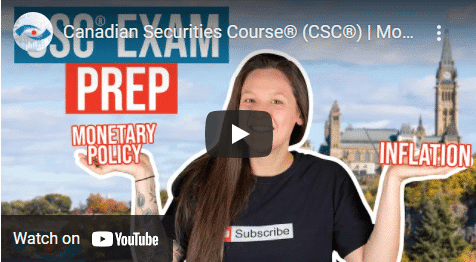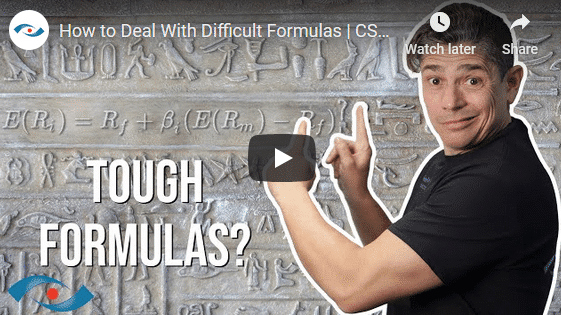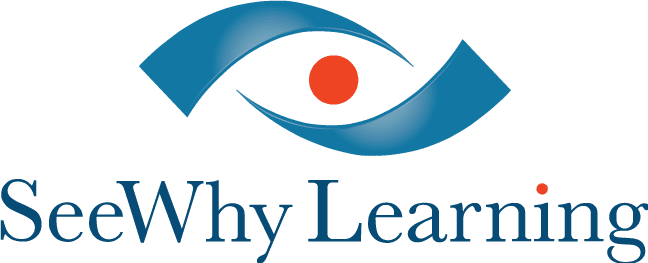Hey everybody, Andre here at The Coach’s Hangout. Calculating formulas has never been my strong suit and I’m even worse at memorizing them. Then there are those killer formulas where parts of the formula look more like ancient symbols to me. Are you in the same boat? Well, what if you were studying for an exam and you came across a formula like this one, which is found in CSI’s Wealth Management Essentials course.

I know it can be a little intimidating, but don’t worry. In the video I’m going to show you how a SeeWhy study coach would handle this. You’ll also find these techniques reflected in our study tools.
When preparing for an exam, a student has four basic options when it comes to dealing with formulas.
- If possible, try to understand the formula. That way there’s nothing to memorize. We take this approach with a formula like accrued interest, which isn’t too difficult and is fairly logical.
- Simplify the formula or come up with an easier way. We’re going to use this technique today.
- Try to memorize the formula and just do your best.
- Pick your battles, which sometimes means not battling with a concept and taking your chances. This can be a pretty good trade-off. As it can allow you to focus your energy in other areas where you can potentially pick up many more marks. Be careful though, Option #4 can be dangerous. So it needs to be used cautiously.
What if you decide to pass on a formula and it turns out to be important on exam day. While there are no guarantees, our study coaches have decades of experience coaching students through regulatory exams and have imparted their knowledge and wisdom throughout our study tools to help you make these judgment calls.
For the capital asset pricing model, also known as CAPM, I’m going to use Option 2 and make the formulas so much easier. And I’m sure you’ll agree. This formula factors in things like beta and the risk-free rate of return to calculate the expected return on a portfolio.

We cover beta and the risk-free rate of return in other videos, so I’m not going to get too much into the weeds on that. Here [in the video] is a sample question from the SeeWhy study tools and the formula you would use.
Instead of using this scary looking formula.

All you have to do is remember three easy steps.
- Take the historical market return and temporarily deduct the risk-free rate of return.
- Multiply what’s left by the portfolio or securities beta.
- Add back in the risk-free rate.
Pretty simple, right? Well, let’s give it a try.
Step 1. The historical market return is 10%. So we temporarily deduct the risk-free rate of 3% and 7% (10% – 3%) remains.
Step 2: We multiply 7% by the beta of 1.5 and get 10.5%.
Step 3: We then add back the risk-free rate of 3% and get an expected return of 13.5% (10.5% + 3%). Let’s select that answer. And of course we are correct.
I promise you, this gets really easy with practice and you’ll get lots of practice when working with the SeeWhy exam preparation tools. Thanks for dropping by The Coaches Hangout, and if you’re finding these videos helpful, please let us know by subscribing to our YouTube channel and smashing that LIKE button so we can keep the content coming.

Recent Videos

Monetary & Fiscal Policy Part 2

Monetary & Fiscal Policy






